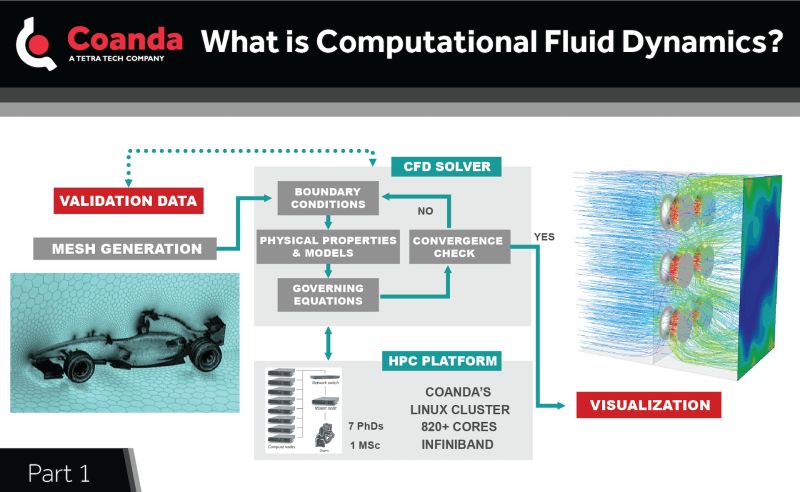What Is CFD ( Computational Fluid Dynamics)?
Posted on March 30, 2021 Computational Fluid Dynamics
This post was originally published in two parts which have been combined below
Part 1
Computational Fluid Dynamics (CFD) is a branch of fluid mechanics that implements computational simulation and numerical analysis to solve problems involving fluid flows—including reacting flows with heat transfer. The technique allows the evaluation of existing systems or proposed designs before any real parts are made, giving clients the opportunity to optimize designs, or gain insight into operational behaviours within their system.
The process begins with the creation of a 3D CAD model representing the geometry of the problem being considered. This geometric domain is then divided into small cells or elements—a procedure commonly known as grid generation or meshing.

Next, suitable boundary conditions are defined at the bounding surfaces of the domain and, for transient problems, initial conditions are also defined. Mathematical models representing the conservation of mass, momentum, energy and species are solved on this grid of cells to obtain a prediction of variables such as velocity, pressure, temperature and composition within the entire grid.
Part 2
The mathematical solution process starts with an initial guess of all the variables in the domain and then the pertinent equations are solved iteratively until a steady-state solution is obtained. For transient problems, a suitably converged solution at discrete time-steps is calculated to simulate the time progression of the variables within the geometric domain.
In order to validate the converged numerical solution, the result is typically compared with experimental data for the same geometric domain and boundary conditions. Once a validated numerical solution is obtained, the flow conditions within the domain or at the boundaries can be varied and further simulations may be carried out for design purposes or to investigate performance for other scenarios.
With the advent of powerful and relatively inexpensive computer hardware—along with highly developed software programs and advanced techniques such as parallel computing—CFD has become a powerful tool that can be used to analyze many industrial processes spanning a wide range of fields, including aerodynamics, engine and combustion analysis, biological engineering and chemical processing.



